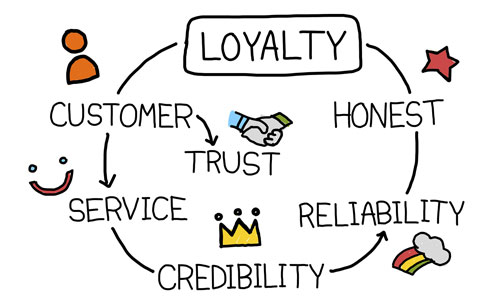Are you missing the one figure that never shows up on financial reports: loyal customers?

Each day thousands of small business owners and C-Level Executives read their profits and loss statements (P&L), financial records to sales reports.
Searching and scanning for increases in sales, orders and profits while hoping for decreases in cost of goods sold or other direct costs as well as indirect costs. Yet, through all this, they are probably missing one figure that never shows up on financial reports.
And, do you know what that number is? And the answer is relationships from your loyal customers!
Was that the answer in your head? Did you think of something else?
Since this figure is not clearly articulated in any of the traditional reporting metrics, what happens is that current problems are really symptoms in disguise. And then the solutions do not deliver sustainable change because the real problem is not addressed.
For example does your business suffer from:
- Lacklustre sales problems?
- Training problems?
- Employee turnover?
These are just a few of the many symptoms facing most businesses because they fail to understand the purpose of business: Attract and Maintain Loyal Customers.
Customer loyalty or rather the lack of customer loyalty is the real issue. For example, customer service research suggests that:
- 5% retention in loyal customers can create an increase of anywhere from 25% to 100%
- To acquire a new customer costs 5 to 10 times more than keeping an existing one
- Up to 75% of those customers who left you considered themselves to be satisfied
Small businesses to Fortune 500 organization need to leave the 20 century model of customer satisfaction and embrace the 21 century paradigm of customer loyalty as the key critical measurement to business success.
To take such bold action requires these small business owners to C Level executives to know the following:
- Average client acquisition cost
- Average client value
- Average transaction value
- Total Revenue Opportunity (based upon lifetime of customer)
- Customer Loyalty Score
- Employee Loyalty Score
When these metrics have been established and an action plan has been constructed from the Senior Executive Management Team, then focused actions will cascade down through the organization. The end result is that measuring relationships through loyal customers will become much easier. Then and only then will the business have a much clearer picture of what it truly takes for business success.
Take action
As a small business owner to senior executive, take the time to think about relationships and not just your profits. What kind of metrics or benchmarks can you establish to ensure that you are measuring both?
About the Author
Leanne Hoagland-Smith coaches small businesses to large organizations and high school students to entrepreneurs to double performance by closing the gap between today’s outcomes and tomorrow’s goals.




